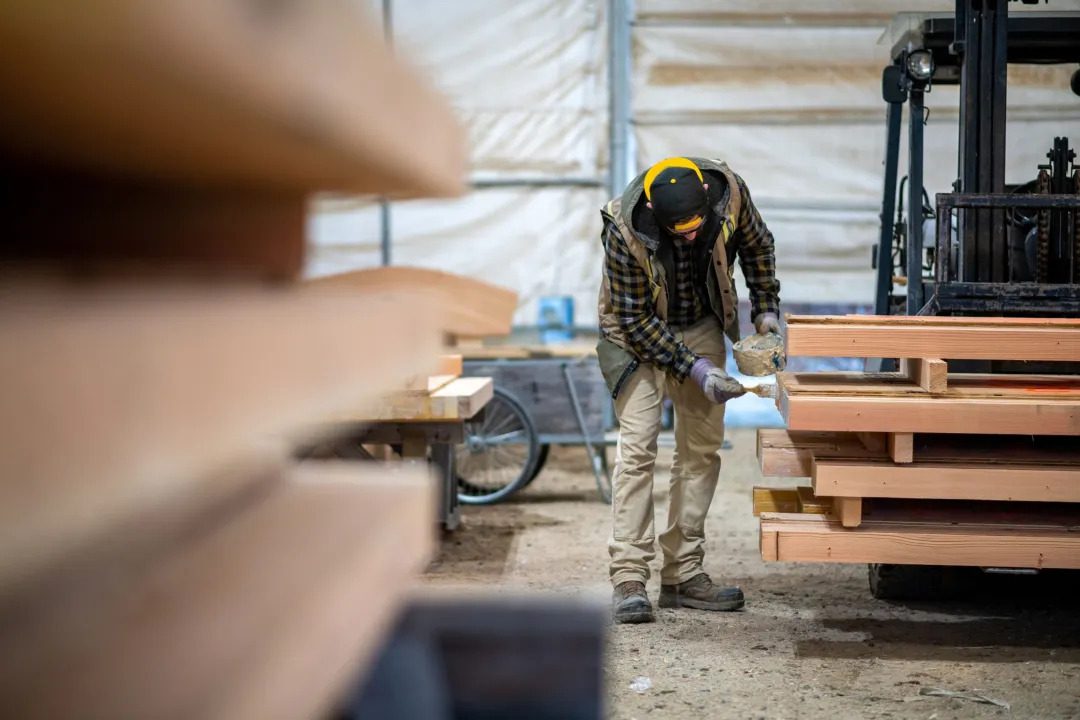(Bloomberg) —
In the 1990s, architects and builders in central Europe started experimenting with a novel material. It was wood, but a far cry from a contractor’s 2-by-4s: These were panels like thick wooden sandwiches, the layers stacked and glued with the grains at perpendicular angles, greatly increasing their strength. Called cross-laminated timber, or CLT, the product began to be used in buildings from Austria to Scandinavia.
Eventually, CLT and glued laminated beams and columns — a family of materials known as mass timber — made their way across the Atlantic. Architects were enthusiastic, but familiarizing themselves and the construction sector with a new way to build was a learning curve.
US building codes also prohibited wooden structures over a certain height as a fire risk (remember the Great Chicago Fire from history class?). A 284-foot apartment tower in Milwaukee, Wisconsin, that’s currently the tallest mass timber building in the world needed a special permit to be built.
The easing of code restrictions a few years ago, after safety testing, coincided with many companies setting environmental, social and governance (ESG) goals to touch off a timber boom.
Timber high-rises have now been proposed for cities around the country. Walmart Inc. is building what it has said will be the world’s largest mass timber corporate campus on 350 acres in Bentonville, Arkansas. Alphabet Inc.’s Google has wood buildings under construction in Sunnyvale, California.
Data from the Wood Products Council, an industry group that tracks US timber building projects, tells the same story. The group counted 69 projects constructed across the US in 2013. By December 2022, that number had grown to 755. Adding in projects still in the design phase (some of which won’t get built), the total rises to 1,677.
Elsewhere in the world, timber is reaching new heights and scales.
A 20-story “plyscraper” opened in Skelleftea, Sweden in late 2021. A 39-story timber tower is on the boards for Atlassian Corp. in Sydney. And Paris’s Olympic Village for the 2024 Summer Games will be built of bio-sourced materials, including a lot of wood.
The global CLT market reached $1 billion in 2022, according to Grand View Research, which projects it will triple in size by 2030.
In the midst of a climate crisis, the building sector needs new approaches and new materials. Construction and building operations account for about one-third of the world’s total carbon emissions. The cement in concrete alone is responsible for an estimated 8%, and steelmaking is also highly energy- and carbon-intensive. By contrast, wood is a renewable material and a carbon sink.
Mass timber’s relative lightness, and the way it lends itself to modular, Lego-like construction, are a good fit for the growing number of architectural projects that seek to renovate existing structures rather than demolishing and replacing them entirely, which typically expends more carbon.
But the material isn’t a miracle fix, and many questions and caveats remain about construction’s timber turn.
From the series: How a Seattle Architect Helped Make Timber Towers Legal in the US
Much of the assumed climate benefit of using wood depends on the forest that the wood came from and how it is managed. Lifecycle analysis of the carbon footprint of mass timber is an evolving and imperfect science, potentially opening the door to greenwashing. The recent setbacks for ESG — and a murky outlook for commercial real estate — could make investors and owners think twice about taking a chance on something new.
Over the coming months, Bloomberg Green will delve into this shift in our series Timber Town. We hope you’ll follow along as we explore every stage in the process of making a mass timber building — and a mass timber city: from the forest to the design studio to the factory producing building components, to the construction site and, not least, to the wood-lined rooms where many people may one day live and work.
To contact the author of this story:
Amanda Kolson Hurley in Washington at ahurley21@bloomberg.net
© 2023 Bloomberg L.P.





